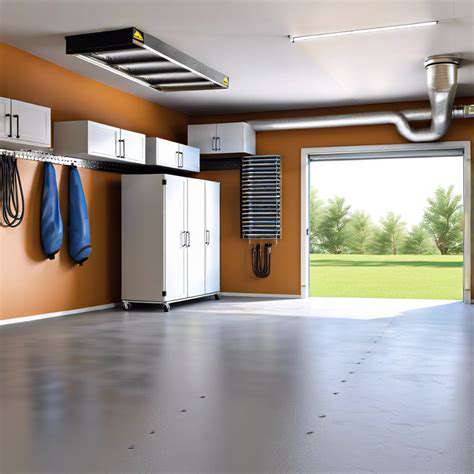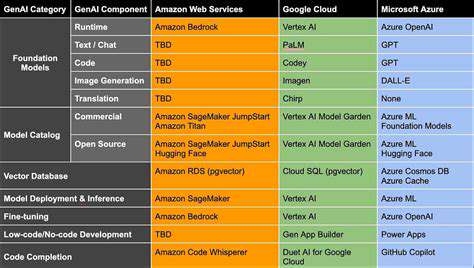Guide to Organizing Your Garage

Inventory Assessment
Before diving into garage organization, take time to evaluate what you currently have. A detailed inventory helps reveal your actual storage requirements. Sort items by importance, how often you use them, and whether they could serve new purposes. Letting go of unused possessions creates breathing room in your garage. Documenting the current state with photos or videos provides a helpful reference point during reorganization.
Create specific notes about each category - tools, sports gear, seasonal decorations, and miscellaneous storage. This groundwork establishes a clear starting point for your garage transformation journey.
Space Evaluation
Precise measurements form the foundation of good garage planning. Record all dimensions including ceiling height and wall space, noting any permanent fixtures that affect layout options.
Spotting inefficient areas reveals immediate opportunities for better space utilization. Accurate measurements prevent purchasing storage solutions that won't fit properly or create congestion.
Decluttering and Discarding
The clearing-out process demands honest evaluation. Separate items into definite keep, maybe, and discard piles. Be ruthless with broken equipment and things untouched for years.
Responsible disposal through donation centers, recycling programs, or proper trash removal benefits both your space and community. This purge creates room for thoughtful organization.
Storage Solutions
Modern garage storage offers countless options. Wall-mounted racks, ceiling pulleys, and modular shelving systems each solve different spatial challenges while keeping contents visible and accessible.
Strategic investment in quality storage pays dividends through years of easy access and clutter prevention. The right systems transform chaotic spaces into functional extensions of your home.
Accessibility and Functionality
Organize based on usage patterns. Daily-use items deserve prime real estate at waist level, while seasonal decorations can occupy higher or harder-to-reach spaces.
Logical placement eliminates the frustration of hunting for items when you need them most. Group related tools together near their typical usage areas for maximum efficiency.
Safety Considerations
Never overlook potential dangers. Check for loose flooring, ensure adequate lighting throughout, and verify all storage units are securely anchored. Proper safety measures protect both people and possessions in your garage environment. Install motion-sensor lights in darker corners and use cord organizers to eliminate tripping hazards.
Routine safety inspections prevent small issues from becoming major hazards. Stable storage prevents accidents and protects your valuable equipment.
Future Needs and Growth
Think beyond current requirements. Will hobbies expand? Might vehicle needs change? Planning for evolution prevents future organizational headaches. Flexible systems accommodate changing needs better than fixed solutions.
Anticipating life changes ensures your garage organization remains relevant through different seasons of life. This proactive thinking saves time and money on future reorganizations.

Quality sleep positions significantly impact nightly rest and recovery. Proper alignment reduces morning stiffness and supports the body's natural healing processes during sleep. Various positions distribute weight differently, affecting circulation and pressure points throughout the night.
Creating Zones for Efficiency: Streamlining Workflow
Defining Your Zones
Transform your garage by establishing clear functional areas. Distinct spaces for parking, workshop activities, storage, and hobbies create visual and physical boundaries that prevent disorder. This intentional separation makes finding items intuitive and maintains order naturally.
Place everyday essentials in convenient locations while tucking away occasional-use items. This smart positioning saves countless hours over time by eliminating unnecessary searching. Thoughtful zoning turns chaotic spaces into productivity hubs.
Tool Organization and Storage
A place for everything and everything in its place - this mantra prevents tool chaos. Group similar items together in labeled containers or on shadow-boarded walls where missing tools become immediately obvious. Protective storage extends tool lifespan by preventing damage.
Consider specialized holders for frequently used items - magnetic strips for metal tools, pegboards for gardening equipment, and foam-cut inserts for delicate instruments. These solutions combine accessibility with protection.
Color-coding adds another organizational layer. Paint tool handles or use colored tape to indicate size differences or usage categories. This visual system speeds identification when working on projects.
Clear labeling eliminates guesswork. Whether using printed labels, engraving, or durable markers, identification should withstand garage conditions and remain legible over time.
Vehicle Maintenance and Storage
Create a dedicated vehicle care station with all necessary supplies within arm's reach. Include a rolling cart for fluids, cleaners, and frequently used tools. This concentrated setup makes maintenance tasks smoother and more enjoyable.
When parking vehicles, consider fold-down workbenches or ceiling-mounted storage that tucks away when not in use. These space-saving solutions maintain accessibility without sacrificing precious floor space.











